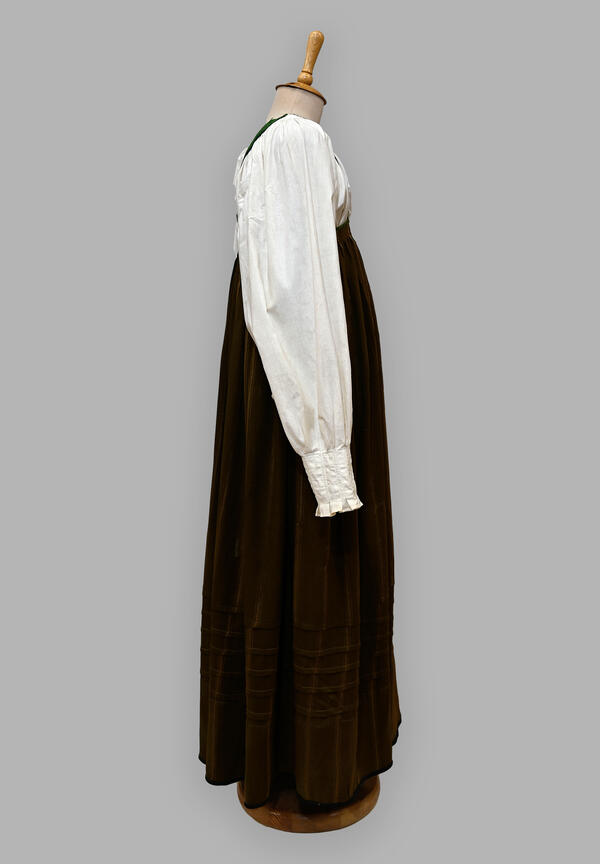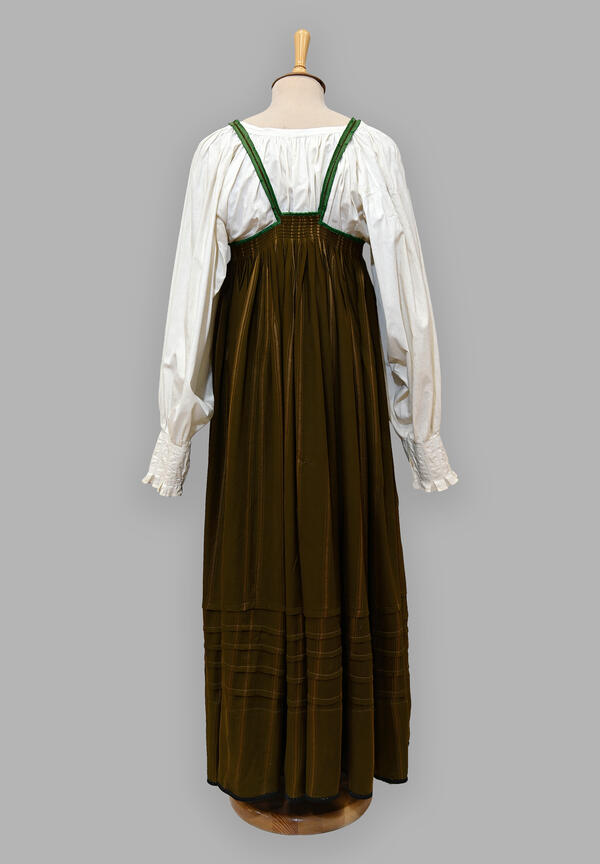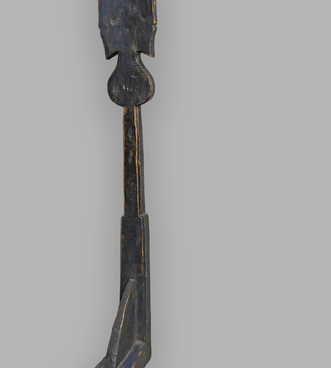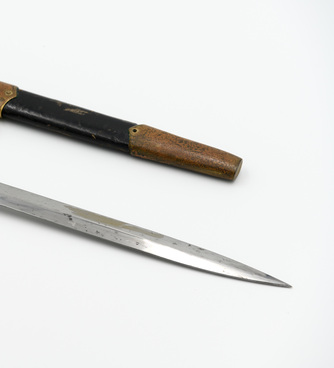A kostych is a sleeveless casual sarafan dress held on the shoulders with straps. It is presented in the main exhibition of the Polyarny Museum of History and Local Lore in the “Life of the Pomory” section. It was likely made in the late 19th — early 20th century in the village of Umba. Such dresses were a popular casual women’s clothing item in Umba on the Tersky Coast. The exhibit was kept in the house of Anna Konovalova, a resident of Umba who inherited it from her Pomor parents.
Traditional women’s clothing in the Russian North in the late 19th — early 20th century was a round (straight) sarafan with straps. A sarafan and a shirt for a long time formed the basis of the casual and festive women’s peasant costume. In the Russian North, the words “sarafan” and “rubakha” (the word “rubakha”, meaning shirt, was only used in the context of men’s clothing) were rarely used. People used more specific and locally accepted names of these types of clothing. On the coast of the Kola Peninsula, a casual everyday sleeveless dress with straps was called a “kostych”. These dresses were sewn from straight sheets of fabric gathered at the top of the lining and had relatively narrow straps. Sarafan dresses resembled a high-cut skirt with straps and were made of calico, satin, pestle, patterned textile, fine wool. Sarafan dresses were not decorated, as brightly colored fabric already made them beautiful.
It is unknown when exactly the
sarafan worn over a shirt appeared in the everyday life of Russian women and
girls. The first written mention of this word dates back to 1376. Some
researchers believe that the type of clothing that was called a sarafan in the
19th century was familiar to Russians back in the 14th–17th
centuries, but under other names, and was common only in cities. Others believe
that the sarafan became a staple in peasant women’s clothing only in the 18th century as a result of the transformation of clothes worn by townspeople. And
yet the sarafan dress was more characteristic for the northern and central
provinces of Russia. But over time, it made its way to the south, replacing
more traditional forms of clothing. By the late 18th — early 19th century the sarafan became firmly associated in Russia with the national
costume. It was worn not only by peasant women — for a long period, starting
from the 18th century, it was also worn by lower middle class and merchant women.






